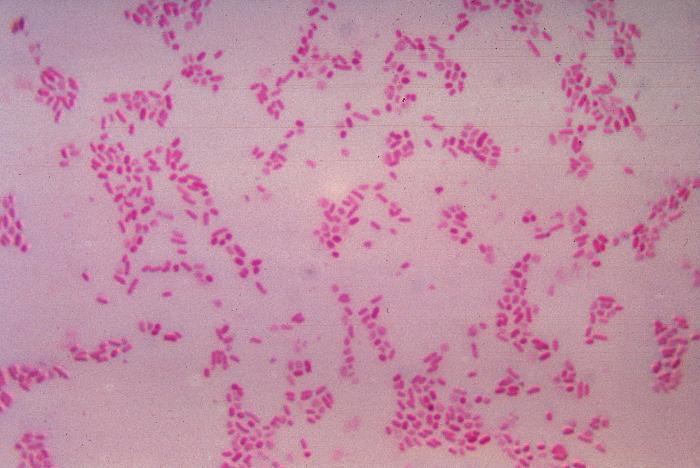Higher classification Bacteroides | Phylum Bacteroidetes Scientific name Bacteroides fragilis Rank Species | |
 | ||
Similar Bacteria, Fusobacterium, Proteus, Bacteroides thetaiotaomicron, Enterobacter | ||
Bacteroides fragilis is an obligately anaerobic, Gram-negative, rod-shaped bacterium. It is part of the normal flora of the human colon and is generally commensal, but can cause infection if displaced into the bloodstream or surrounding tissue following surgery, disease, or trauma.
Contents
Epidemiology and pathogenesis
The B. fragilis group is the most commonly isolated Bacteroidaceae in anaerobic infections, especially those that originate from the gastrointestinal flora. B. fragilis is the most prevalent organism in the B. fragilis group, accounting for 41% to 78% of the isolates of the group. These organisms are resistant to penicillin by virtue of production of beta-lactamase, and by other unknown factors.
This group was formerly classified as subspecies of B. fragilis (i.e. B. f. ssp. fragilis, B. f. ssp. distasonis, B. f. ssp. ovatus, B. f. ssp. thetaiotaomicron, and B. f. ssp. vulgatus). They have been reclassified into distinct species on the basis of DNA homology studies. B. fragilis (formerly known as B. f. ssp. fragilis) is often recovered from blood, pleural fluid, peritoneal fluid, wounds, and brain abscesses.
Although the B. fragilis group is the most common species found in clinical specimens, it is the least common Bacteroides present in fecal flora, comprising only 0.5% of the bacteria present in stool. Their pathogenicity partly results from their ability to produce capsular polysaccharide, which is protective against phagocytosis and stimulates abscess formation.
B. fragilis is involved in 90% of anaerobic peritoneal infections. It also causes bacteremia associated with intraabdominal infections, peritonitis and abscesses following rupture of viscus, and subcutaneous abscesses or burns near the anus. Though it is gram negative, it has an altered LPS and does not cause endotoxic shock.
Treatment
In general, B. fragilis is susceptible to metronidazole, carbapenems, tigecycline, beta-lactam/beta-lactamase inhibitor combinations (e.g., Unasyn, Zosyn), and certain antimicrobials of the cephalosporin class, including cefoxitin. The bacteria have inherent high-level resistance to penicillin. Production of beta lactamase appears to be the main mechanism of antibiotic resistance in B. fragilis. Clindamycin is no longer recommended as the first-line agent for B. fragilis due to emerging high-level resistance (>30% in some reports).
Environmental research
B. fragilis bacteriophages are commonly used as tracers of human faecal material.
